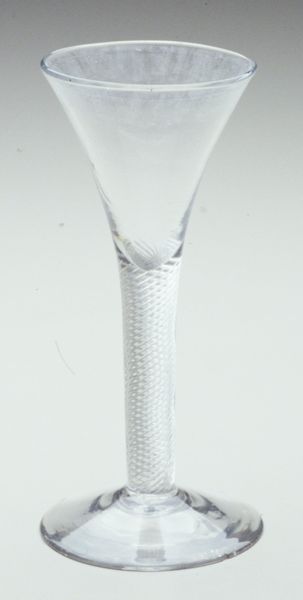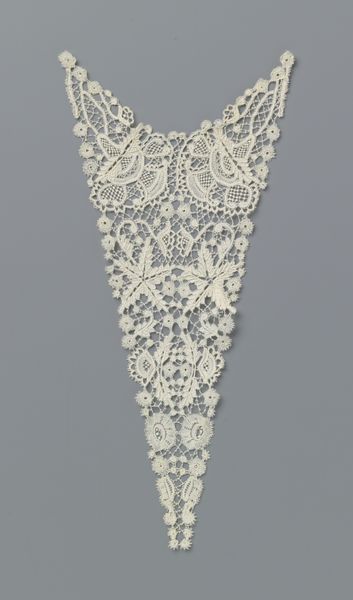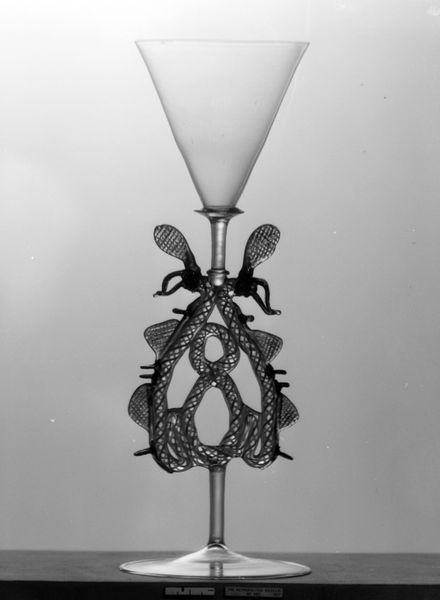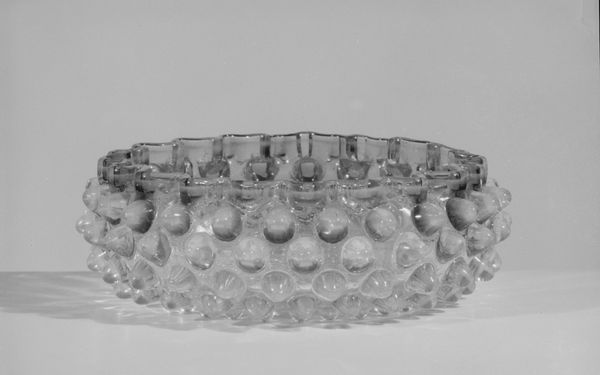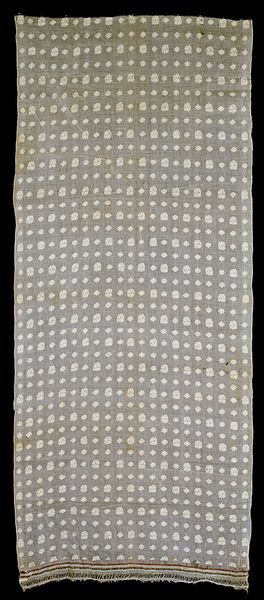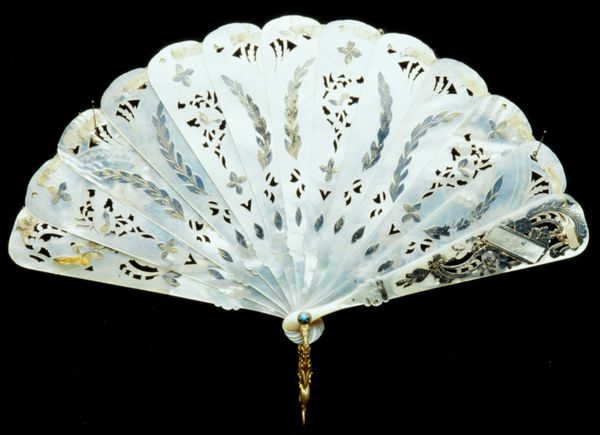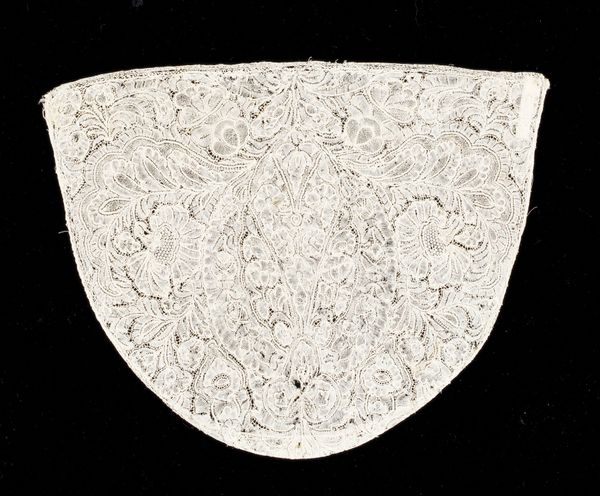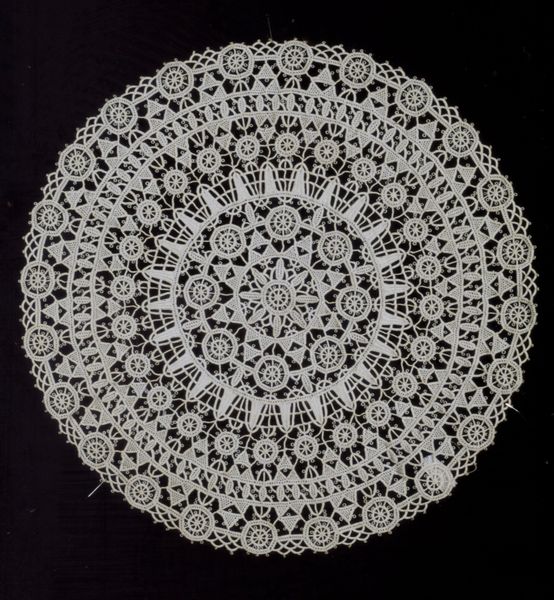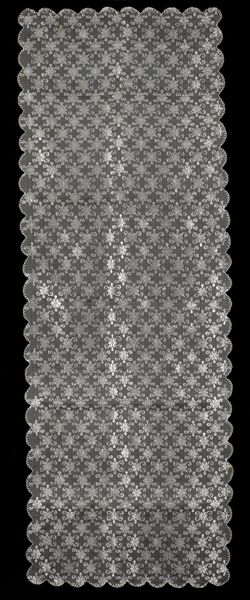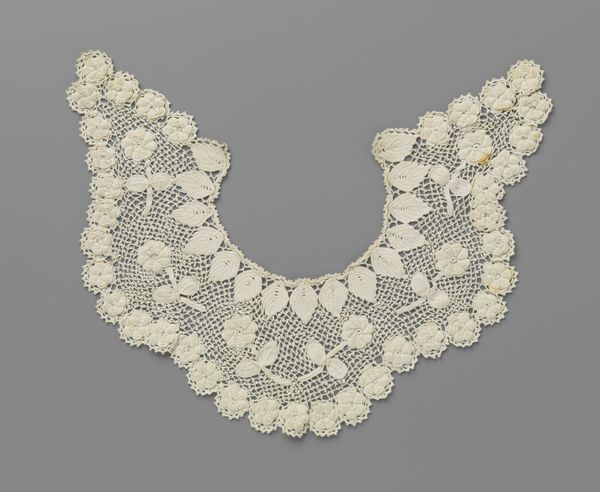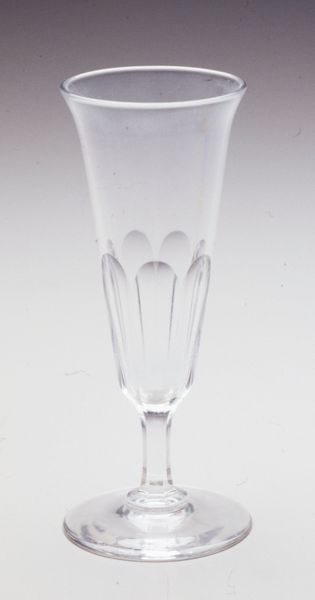
silk, weaving, textile
#
silk
#
weaving
#
textile
#
organic pattern
#
pattern repetition
#
decorative-art
Dimensions: 71 x 26 1/2 in. (180.34 x 67.31 cm)
Copyright: Public Domain
Curator: The delicacy! It looks like frost forming on a windowpane. Editor: That’s a beautiful observation. Here we have a "Mantilla or veil," made around the 19th century. It is currently part of the collection at the Minneapolis Institute of Art. It’s woven from silk. Curator: Silk… Of course. Looking at the history of these veils, there's so much wrapped up in their use: social status, religious devotion, the constraints imposed upon women and their visual representation within particular societies. What do you think this one may have symbolized for the woman who wore it? Editor: Given the likely era, a Mantilla in silk, would almost certainly signify status. These veils were closely tied to displays of class, wealth and devotion to certain traditional standards in specific cultures. The material and intricate weaving alone speaks to economic privilege. Beyond its aesthetic value, the veil was often a visual marker in specific social contexts, deeply entrenched within community customs. Curator: And thinking about those contexts, a veil also operates as both a shield and a statement. On one hand, there’s the shielding of a woman’s face, often linked to modesty or societal expectations of privacy. But simultaneously, it's a visually rich garment that could amplify her presence, announcing her belonging to a specific class, ethnicity, or belief system. There's real tension there. Editor: Absolutely. And that tension reflects the multifaceted nature of fashion throughout history. How textiles communicate identity, religion and political power remains relevant even today. They offer a nonverbal commentary on socio-political trends. I wonder what kinds of conversations this veil sparked or silenced during its time. Curator: Indeed. Its survival prompts me to consider the complex histories of display—how garments worn on bodies are ultimately repurposed, sometimes fetishized or rendered as objects outside the realm of the living, breathing individuals whose lives they once framed. Editor: And so, through understanding garments, the art within them, we also begin to understand the histories they carry with them. Curator: An understanding of art as the cultural artifact that they undoubtedly are. Editor: Precisely. It makes you wonder how an object as simple as a silk veil can say so much.
Comments
No comments
Be the first to comment and join the conversation on the ultimate creative platform.

